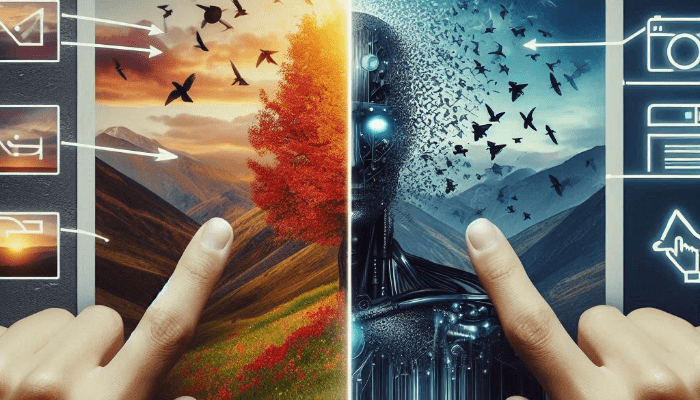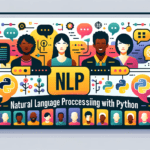The ability of computers to ‘see’ and ‘understand’ images akin to humans is a fascinating journey, largely governed by two pivotal fields: Computer Vision and Image Processing. While these terms might sound synonymous at first, they entail distinct roles and methodologies, each contributing uniquely to the advancement of modern technology. In this exploration, we delve into the intricate nuances of computer vision and image processing, unraveling their core principles, techniques, and the synergistic interplay that propels innovation across various industries.
Computer Vision: Teaching Computers to Interpret Images
Imagine a scenario where a robot is presented with a photograph. Unlike humans, who instinctively comprehend the contents of the image, the robot grapples with deciphering its significance. This is precisely where computer vision steps in. At its core, computer vision is the art of instructing machines to recognize and comprehend visual information. It involves a myriad of techniques aimed at enabling computers to discern objects, interpret scenes, and even identify patterns within images.
Core Principles & Techniques of Computer Vision
At the heart of computer vision lie several core principles and techniques that empower machines to interpret visual data:
Pattern Recognition: Pattern recognition is one of the fundamental tasks within computer vision. This entails teaching computers to identify similarities and differences in images, akin to playing a game of ‘spot the difference.’ Pattern recognition forms the bedrock for tasks such as facial recognition and object identification within images.
Deep Learning: Deep learning, particularly through Convolutional Neural Networks (CNNs), has revolutionized computer vision. By exposing computers to vast datasets comprising millions of images, deep learning enables machines to discern and understand intricate details within visual data. This paradigm shift has fueled breakthroughs in image classification, object detection, and even emotion recognition.
Object detection represents the pinnacle of computer vision sophistication. It involves training machines to not only perceive the contents of an image but also identify specific objects within it. Whether distinguishing between cars, people, trees, or buildings in a street scene, object detection showcases the remarkable capabilities of computer vision algorithms.
Image Processing: Enhancing Visual Data
Contrary to computer vision’s focus on interpreting images, image processing revolves around enhancing and manipulating visual data to improve its quality or aesthetic appeal. It encompasses a myriad of techniques aimed at altering the appearance of images without necessarily changing their underlying semantic content.
Fundamental Principles & Techniques of Image Processing
Image processing harnesses a diverse array of principles and techniques to transform visual data:
Image Enhancement: At the crux of image processing lies the concept of image enhancement. This involves refining digital images by adjusting parameters such as brightness, contrast, or color saturation to improve their visual clarity and appeal. Image enhancement techniques are pervasive across various domains, including digital photography, medical imaging, and graphic design.
Filtering: Image filtering is a powerful tool in image processing. It involves applying algorithms to selectively modify or enhance specific components of an image, such as removing noise, sharpening edges, or smoothing out imperfections. Filtering techniques play a crucial role in refining visual data for subsequent analysis or presentation.
Transformation Techniques: Image transformation techniques enable the alteration of an image’s geometric properties, such as its size, orientation, or perspective. Whether it’s resizing an image for a specific application or applying geometric transformations to correct distortions, these techniques afford practitioners unparalleled flexibility in manipulating visual data.
Distinctions Between Computer Vision and Image Processing
While computer vision and image processing share a common goal of working with visual data, they diverge in their overarching objectives and methodologies.
Computer Vision: Decoding the Visual World
Computer vision revolves around extracting meaning and understanding from images. Its primary focus lies in deciphering the semantic content of visual data, including object identification, scene interpretation, and behavior recognition. Computer vision algorithms empower machines to ‘make sense’ of images, akin to how humans perceive and comprehend visual information.
Image Processing: Enhancing Visual Perfection
In contrast, image processing is geared towards enhancing and refining the visual quality of images. Its primary objective is to manipulate visual data to improve its aesthetic appeal or utility without necessarily altering its semantic content. Image processing techniques are instrumental in tasks such as color correction, noise reduction, and image restoration, paving the way for more effective analysis and interpretation by computer vision systems.
Interconnection and Overlap: The Synergy Unveiled
While computer vision and image processing represent distinct domains, their synergy is evident in numerous applications and technological advancements.
Building Blocks: Image Processing in Computer Vision
Image processing often serves as the foundational framework for computer vision tasks. Techniques such as noise reduction, contrast enhancement, and edge detection lay the groundwork by refining visual data, thereby enhancing the accuracy and efficacy of subsequent computer vision algorithms.
Integrated Systems: Collaborative Power
In complex systems and applications, computer vision and image processing converge to drive transformative outcomes. Whether autonomous vehicles rely on image processing for clear visual input or medical imaging systems leverage computer vision for precise diagnosis, the collaborative synergy between these fields unlocks new frontiers in technological innovation.
Applications and Real-World Examples: Transforming Industries
The impact of computer vision and image processing transcends theoretical realms, permeating diverse industries and sectors.
Healthcare: In the realm of healthcare, image processing enhances medical scans for clarity, while computer vision aids in detecting abnormalities and facilitating early diagnosis and treatment planning.
Automotive: Autonomous vehicles leverage image processing for visual input, which is essential for computer vision systems to accurately detect objects and avoid obstacles.
Surveillance: Security systems harness image processing to improve image quality, aiding computer vision in accurately recognizing faces or suspicious activities and enhancing overall security measures.
Entertainment: In the realm of entertainment, image processing contributes to visual effects, while computer vision enables immersive experiences such as augmented reality gaming.
Case Studies: Integrating Computer Vision and Image Processing
Real-world case studies exemplify the transformative potential of integrating computer vision and image processing across various domains.
Smart City Projects: Traffic management systems utilize image processing to enhance traffic camera feeds, which are then analyzed by computer vision to manage traffic flow and detect incidents.
Agricultural Technology: Crop monitoring systems leverage image processing to clarify aerial images of crops, while computer vision analyzes these images to assess crop health and optimize agrarian practices.
Conclusion: The Convergence of Vision and Processing in the Digital Age
In conclusion, computer vision and image processing represent two distinct yet intricately interconnected fields that are driving unprecedented innovation in the digital age. While image processing focuses on enhancing visual data, computer vision seeks to interpret and extract meaning from it. Together, these fields synergize to revolutionize industries such as healthcare, automotive, surveillance, and entertainment, ushering in a new era of technological advancement and discovery. As we navigate the ever-expanding frontier of visual data, the convergence of vision and processing stands as a testament to the transformative power of interdisciplinary collaboration and innovation.




